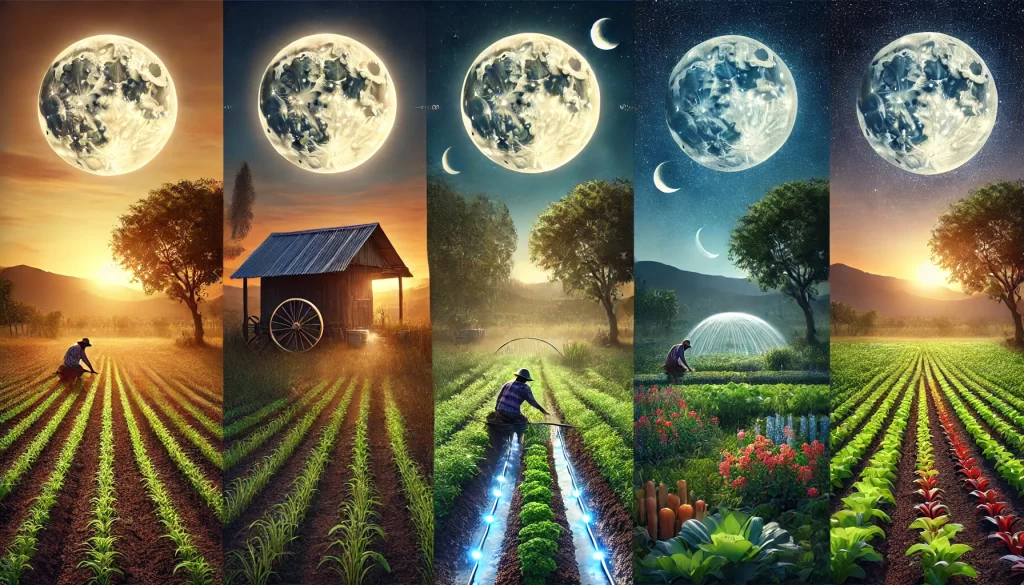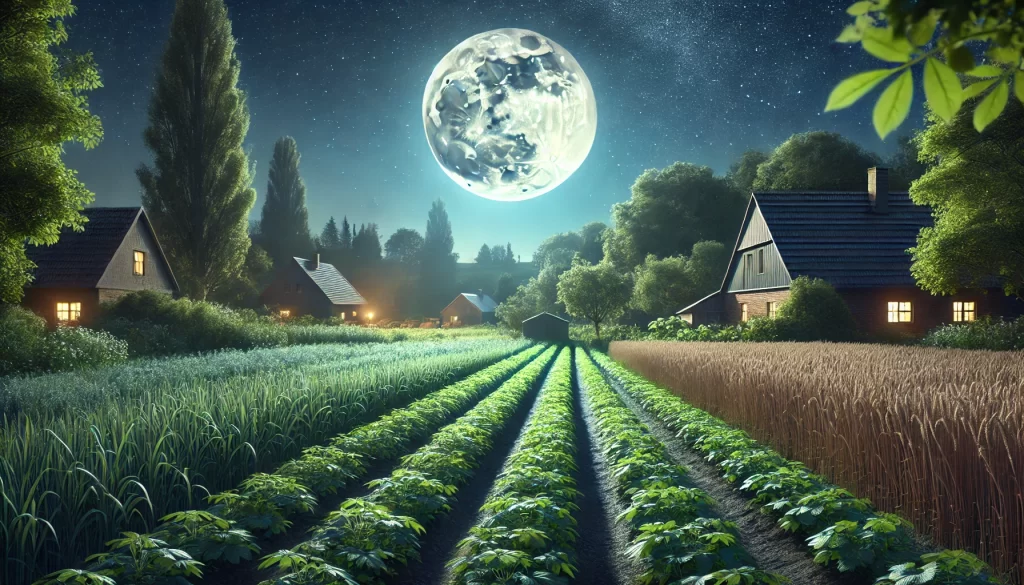The Moon and Its Historical Role in Agriculture
Ancestral Beliefs in Lunar Agriculture
Since ancient times, the phases of the moon have been an essential guide for farmers in various cultures. Civilizations such as the Mayans, Egyptians, and Indigenous communities in the Americas based their agricultural calendars on lunar cycles. According to these beliefs, certain phases of the moon favor activities like planting, irrigation, and harvesting, associating them with the flow of energy and the fertility of the land.

Traditional Practices Based on the Moon
Traditional agricultural practices, such as planting during the waxing moon for crops that grow upward and during the waning moon for underground crops, are still applied in some rural areas. These beliefs are deeply rooted in communities, passed down from generation to generation as folk wisdom.
Science and Lunar Agriculture
Gravitational Impact of the Moon on Soil and Water
The influence of the moon on tides is well-known, but its effect on agricultural systems has also been studied. Recent research suggests that the moon’s gravitational force may alter the water content in the soil and the sap in plants, affecting their growth. Although the effects are subtle, some studies indicate that they could be relevant for certain species and specific conditions.
Scientific Studies on Germination and Growth
Research in horticulture has explored the relationship between lunar phases and seed germination. Some experiments report that germination is faster and more uniform during the full moon, although the results are not always consistent. Scientists attribute these variations to environmental factors such as humidity and temperature, which may interact with lunar influence.

Cultural Interpretations of the Moon in Agriculture
The Lunar Calendar in Different Cultures
In Asia, especially in China, the lunar agricultural calendar remains a key tool for planning planting and harvesting. In Europe, the “farmer’s almanac” includes predictions based on lunar cycles, combining tradition with meteorology.
Rituals and Agricultural Festivals Associated with the Moon
The moon not only influences agricultural practices but also the culture and spirituality of rural communities. Celebrations like the Harvest Festival coincide with specific moon phases, reflecting a symbolic connection between natural cycles and the abundance of the fields.
Application of Lunar Cycles in Modern Agriculture
Use of the Lunar Calendar in Organic Agriculture
Farmers practicing organic methods often turn to lunar cycles to optimize their yields. Activities like transplanting, pruning, and fertilizing are planned based on the moon phases to make the most of natural resources.

Lunar Technologies and Agriculture
The rise of technology has enabled the combination of lunar traditions with modern data. Specialized applications and software integrate lunar phases with soil and climate analysis, offering farmers more accurate tools for decision-making.
Myths and Realities: Separating Beliefs from Evidence
Limitations of Science and Beliefs
Despite the renewed interest in lunar agriculture, scientists emphasize that the direct effects of the moon are difficult to quantify. Many of the benefits attributed to lunar cycles may be the result of better planning and observation of crops, rather than direct lunar influence.
What Does Science Say and What Does Tradition Say?
Although there is no scientific consensus on the moon’s impact on agriculture, the cultural and practical value of these practices is undeniable. Lunar beliefs foster a closer connection with natural cycles, something increasingly relevant in a world seeking sustainability.
 AgronoBlog – Agriculture Blog
AgronoBlog – Agriculture Blog